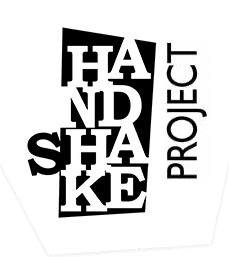October 2019
Artist and HS5 participant SARAH WALKER-HOLT travelled to CODA museum in the Netherlands.
This is her story:
Handshake5 is my third participatory reiteration in the Handshake Project and as a consequence I am engaged in articulating the results of the last 12 months. The reiteration is divided in 2 parts. The first part relates to the HS5 exhibition in CODA and my experience of it as one of the 12 Handshake artists, as well as a viewer of the exhibition curated by CODA. The second part consists of interviews with some Handshake5 artists and their experiences with both the Te Uru and CODA exhibitions in 2019.
An expedition – Part 1:
A particular purpose of exploration and research
Apeldoorn, like the other cities I visited in the Netherlands, is picturesque, clean and well organized. This flows on into the CODA museum, situated in Apeldoorn’s center, a highlight that appeals to both residents and visitors alike with its Paper Art, wooden ADO toys and jewellery collections, providing a cultural focal point. My recent trip through Europe and the UK that included many museums and art galleries such as Galerie Marzee, Galerie Ra and Galerie Rob Koudijs in the Netherlands, ended fittingly with CODA’s Handshake5: New Zealand jewellery artists in dialogue with the CODA collection. As the only Handshake5 artist lucky enough to see this exhibition my report of this event comes from an internal perspective on one hand but from an external one as a viewer on the other and therefore throws up contradicting perspectives that allows me to straddle a bridge.
The initial Handshake5 show at CODA was conceived by Handshake director Peter Deckers when it was still in the throes of Handshake3 ‘Reflect’ at the Dowse Art Museum in Lower Hutt and at Frame in Munich Handwerksmesse. It percolated over a 3 year period where CODA became the selector of the Handshake5 participants and the curator of their exhibition. The idea that the Handshake5 artists be paired with work from CODA’s extensive collection sprouted from two previous shows; Peter Deckers’ JOC: Jewellery out of Context, 2006, hosted by CODA, and Retrospect (2013) curated by Jo Mears at the Dowse Art Museum and Pah Homestead in New Zealand. Mears asked New Zealand jewellers, who worked with Deckers previously, to respond to his work and practice. Handshake, having done several collaborative projects was the hook that CODA needed. It would also allow CODA to pull out some work of their extensive collection. Once selected the Handshake5 artists were set the task of searching through CODA’s collection online and in agreement with CODA, paired with 3 collection pieces each and one of 3 themes: Innovation, Relation to The Body or Rough and Raw. They then delved into a process of creating work that was in dialogue with the chosen work from CODA.

| Sneak peek into the CODA collection storage |
After the opening speeches which included Ruudt Peters’ 21 grams exhibition, I began to orientate myself with CODA’s building and architecture that shifts you through undulating levels and its open yet grounded atmosphere. To get to the Handshake5 show you need to walk through CODA’s mouth-watering café, an education space and down a wide stairwell that leads you through CODA’s Paper Art, Secrets from Gelderland soil: 10,000 years of archaeological jewelry and Ruudt Peters’ 21 grams, before going upstairs to a large space with huge external windows on one side and adjacent internal windows on the other, that looked back down onto the shows you had just walked through. On entering this exhibition area you were faced by a large board with an introduction to the show. From here, each Handshake5 artist was given an individual space divided by small relocatable walls, they shared with their paired collection pieces. The majority of the works were displayed in long rectangular vitrines – alongside their allocated collection piece. Kelly McDonald, Neke Moa, Sarah Read, and Vivien Atkinson had large works on the walls. Caroline Thomas, Sandra Schmid and I, had additional box shaped vitrines attached to the wall. The works parallel to the large external windows were smothered in light and viewing was jostled by the neighbouring building, while the rest, lit with spotlights, were more subdued and anchored to the shows on the floor below, via the internal window. Even though all the windows, light and reflections caught in the glass of the vitrines gave the pieces some visual competition, they all held their supremacy well, giving everything an audacious splendour.
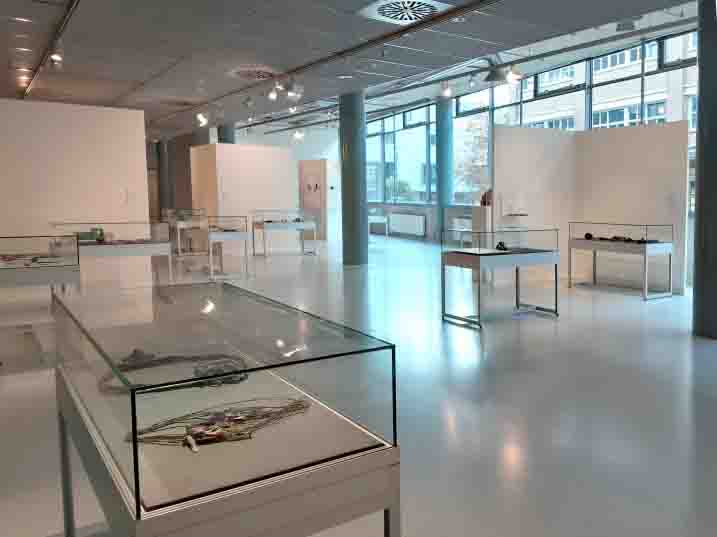
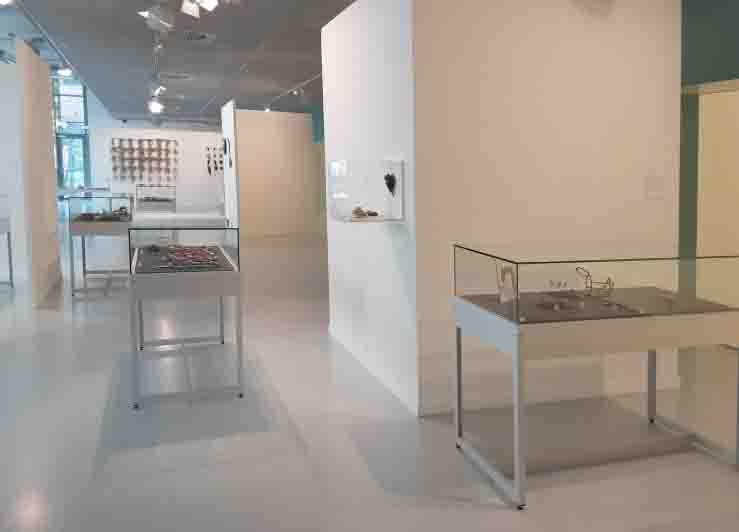
|
The Handshake blog posts are an integral piece of the Handshake process and are a tool that former Handshake mentor Hilde De Decker has been using to avidly follow the project. De Decker remarked on how she followed the particular CODA posts and found them to be missing from the presentation. It is information lost to those new to the Handshake project. This brings into dispute how much information a show should reveal. As interesting and informative as the blog posts are, a line can be crossed. Creating a lack of intrigue in an art work can make it less interesting and enlightening. What curator Vanessa de Gruijter has succeeded in doing is keeping a visual narrative alive to keep the audience engaged through questioning why, what and when. Complimentary to Handshake, the blog posts and the history of the Handshake project are accessible on the web for those who want a more in-depth understanding. They serve fundamentally as documentation of an ongoing experimental educational and support system outside the conventional institutions. As Peter Deckers often expressed to us, documentation about an artist’s process, is not often revealed to such an extent and in turn is passing on valuable information of a time, era and location about the development of some significant jewellers in Aotearoa.
Conducive to individual blog posts and journeys through the project, the Handshake5 exhibition was accompanied by a cohesive catalogue that primarily gives the viewer information into each of the 12 Handshakers and their work. Interestingly, the introduction by director Carin Reinders suitably starts with the quote “The wider the geographical divide, the more stunning the bridge”[1]. How far New Zealand is geographically and its point of difference, in terms of identity, has to date given New Zealand jewellers a recognisable voice that undeniably arises from its cultural heritage and contemporary jewellery history, with which a concise outline was written by Raewyn Walsh in Handshake’s first book about Handshake 1. It is questionable whether the brief for this show has affected this geographical balance and unwittingly brought the differences between New Zealand and international contemporary jewellery closer together. In The pocket Guide to New Zealand Jewelry , Damien Skinner claimed that ‘New Zealand jewellers work within a historically strong regional tradition that has been fed by international developments but steered its own course’[2]. Ten years later with the interjection of the Handshake project, the international exhibitions it has undertaken and collaborations with international jewellery superstars to a degree created an impact that appears to be opening other pathways, crossing borders and steering Skinner’s claim slightly off course or at least putting his theory to the test.
In 2013, right at the beginning of Handshake, Walsh also identified the computer-generated relationships, stating that ‘interaction between mentors and mentees has, by necessity, been virtual.’[3] As Handshake has developed, the virtual aspect has come to a point where it has now underpinned a whole exhibition. Being paired with pieces from the CODA collection, Roseanne Bartley, having the foresight to see the challenge put before Handshake5 through her own experience, reinforced this aspect in her Handshake5 masterclass by asking us to read and consider her essay, Encounter with a necklace 1978[4].

Yasar Aydin, Layers of Pink and Neke Moa, He Mea
Neke Moa, Caroline Thomas and myself, went on to acknowledge the virtual aspect in our catalogue statements, suggesting that the digital, 2 dimensional element of this project was indicative to our responses overall. Through only being able to consider crucial elements of the paired pieces and breaking them down hypothetically into discernible elements of materials, process and construction, could we engage and create a conversation with each of the designated pieces. Any divide between makers across the contemporary jewellery field is being more and more compromised by the internet and its endless amount of digital photographs available to us all globally via search engines, social media and online exhibitions. Undoubtedly, it impacts on what artists make, creating tendencies or trends that compromise signature styles and authenticity, so it is of consequence that a matter of appropriation becomes a factor for this Handshake5 exhibition at CODA.
From creating a brief that constituted a dialogue with pieces from the CODA collection via a digital platform, the discussion about appropriation became more apparent with the install of the show. This was addressed by Deckers in his essay, How original is original[5], subsequent to his opening speech.
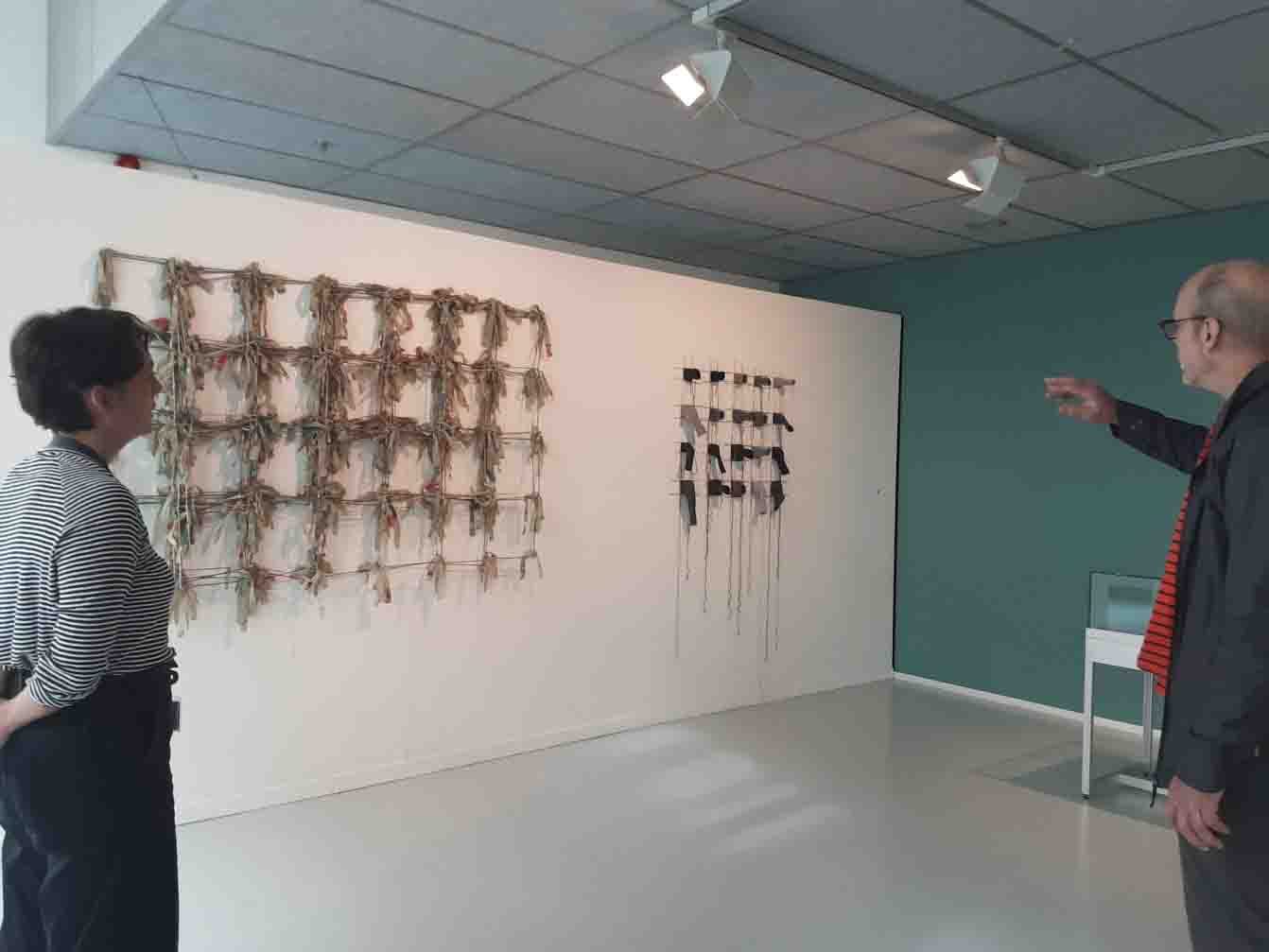
Vanessa de Gruijter and Peter Deckers with LAM de Wolf collection piece, Wandobject, 1992
And Vivien Atkinson’s, Knitting [Wandobjects (Bracelets)]
Inheriting Handshake5 in her new appointment as CODA’s Contemporary Jewellery Curator, Vanessa de Gruijter created an interwoven mix of the pieces from the collection and the Handshake5 artworks. In doing so she blurred the boundaries between the esteemed collection artists and the Handshake5 artists work. De Gruijter obliterated any idea of hierarchy, as similarly stated in the exhibition announcement that describes Handshake as a collaboration that is collegial and equal. It was evidently arguable, by the viewers at the opening, what this strategy did and did not do for the show. On one hand, the pieces all displayed interwoven, along with their labels, made it difficult to generate some cohesiveness for the viewer. For anyone viewing the work without reading the catalogue or had no knowledge of contemporary jewellery’s history, the concept was conceivably lost. Concurrently, there was no apparent aesthetic that inferred the space in time between the making of the older collection pieces and the newer work of Handshake5. This annotates our globalised world and how technology is not only closing the geographical bridge Reinders refers to, but is condensing time and space. On the contrary, it highlights the significance of the collection. What has been made earlier within contemporary jewellery history is still extremely relevant and current with what the contemporary makers are doing. Globalisation and its ability to bring us closer together via digital technology and easily accessible air travel have made the contemporary jewellery’ world smaller yet bigger at the same time. Handshake has definitely presented opportunities for New Zealand makers to step outside of a framework that is otherwise more isolated, while addressing through the overabundance of the information age the crossovers and sameness between makers.
Discussions about authenticity are nothing new. Benjamin Lignel identified this issue with his diary type entries in the Handshake1 book under the subtitle, Copyinglookinglikecollaborating[6].
A noticeable parallel between a collection piece and a Handshake piece was Vivien Atkinson’s, Knitting [Wandobjects (Bracelets)] installation that consisted of 20 bracelets made from partially knitted socks still attached to four double pointed needles. It is fair to say that it is not the work, process or materials that initiate sameness here, but the presentation, as they are arranged in a grid similar to LAM de Wolf collection piece, Wandobject, 1992, she was paired with. Caroline Thomas’ Avatar I and II is another visible similarity when paired with Beppe Kessler’s Hematiet-broche. Thomas does not hide the fact that her conversation with this piece stemmed from an introduction to it through a profile image and some brief details. Viewing pieces side by side gave the audience more information about how a collection piece had informed the Hanshake5 artist’s decisions on how to approach a dialogue with their paired collection piece while also speaking to the brief.
I responded respectively to all of the collection works I was paired with. Later down the track, as de Gruijter was strategizing how to curate such a complex and challenging show we were asked to pair works more specifically, for the sake of presentation prerequisites, thus changing the trajectory for the Handshake5 artists. The end presentation implied a discussion relating to appropriation and authenticity sequential to the digital pairing. My own work, Earthly Ship, was paired and presented next to Lucy Sarneel’s Night Flight (Nachtvlucht), and arranged in such a fashion that the forms imitated each other. If in fact, the positioning of Earthly Ship had reflected how it sits on the body, this mirroring with Night Flight (Nachtvlucht) would have been less suggestive and more in line with it having been initially created in dialogue with all 3 of my paired pieces. Crucial elements, within Earthly Ship’s construction, do not belong just to one singular dialogue as the presentation suggested and did not reveal the linear process that was undertaken. To what degree each artist took this turning point on board was individual.
Kelly McDonald investigated Boekhoudt’s oeuvre, his playful making and interest for holes. Her path was not altered by this presentational prerequisite as her work was very much recognisable as her own signature style, narrative arrangement of pieces. Each grouping was contained in separate wall cabinets and separate from the collection work of Onno Boekhoudt, whom she was paired with, avoiding any immediate reference to sameness. Nadene Carr also stood strong with her own voice and approach, stating that her dialogue was more conducive to the rough and raw theme she was paired with, rather than the collection pieces. Carr chose consciously to respond to an element of Lucy Sarneel, Ruudt Peters and Paul Adie’s psyches that informed her choice of materials, techniques and colour. For de Gruijter, the 3 themes, on top of the pairing added another layer from a curatorial perspective that made this exhibition complex to assemble. Her decision to present pieces with their paired collection piece as the president, instead of the 3 themes, threw up conversations beyond their initial dialogue and brought focus to matters of appropriation and authenticity.
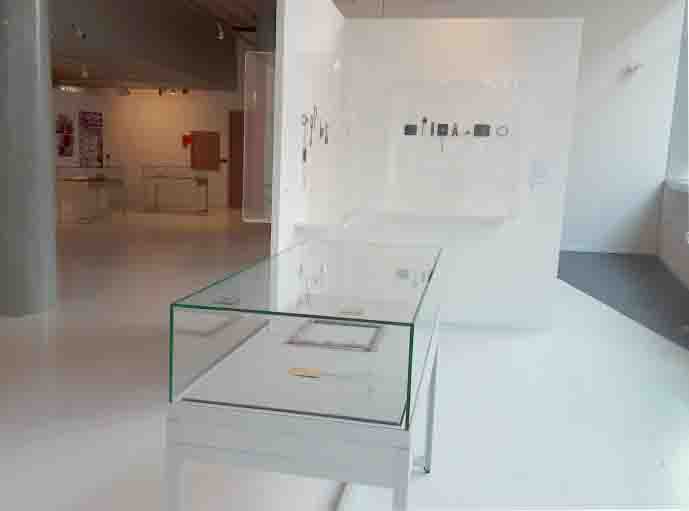
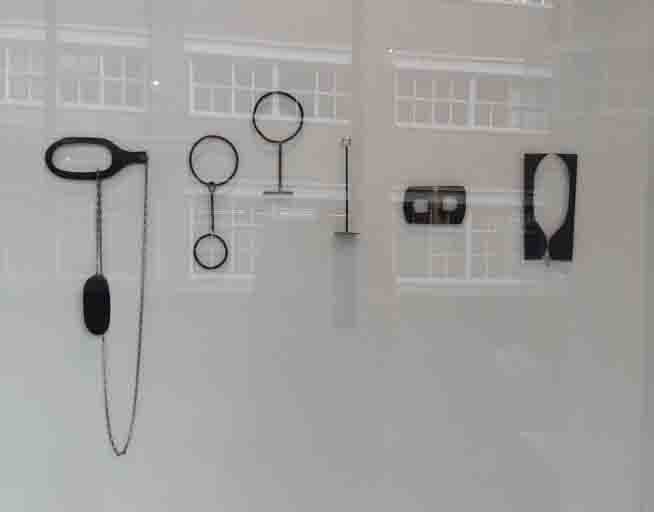
| Kelly McDonald, It should be something like breathing [wall] and Onno Boekhoudt, Object and Broche [vitrine] |
Authenticity and the virtual aspect of Handshake5: New Zealand jewellery artists in dialogue with the CODA collection, is nothing new to this reiteration of Handshake, they have both been subjects of discussion throughout its near 10 year history and will no doubt carry on into its future.
They are symptomatic issues in the current global era of contemporary jewellery, not just for Handshake. The artists unwittingly tackling these issues being the forerunners of this conversation and what it could mean for current contemporary jewellery especially here in New Zealand.

Beppe Kessler, Hematiet-broche [Back]
And series of brooches by Caroline Thomas [Front]
[1] Reinders, Carin, Handshake5: New Zealand jewellery artists in dialogue with the CODA collection, Catalogue, October, 2019.
[2] Skinner, Damien, Pocket Guide to New Zealand Jewelry, San Francisco, Velvet De Vinci, 2010.
[3] Walsh, Raewyn, It’s not the destination it’s the journey – how knowledge travels, Handshake: 12 contemporary jewellers connect with their heroes, Wellington, JEMbooks, 2013.
[4] Bartley, Roseanne, https://artjewelryforum.org/an-encounter-with-necklace-1978, viewed 12/2/2020.
[5] Deckers, Peter, https://www.handshakeproject.com/wp-content/uploads/2019/11/How-original-is-original-essay-by-Peter-Deckers.pdf, viewed 12/2/2020.
[6] Lignel, Ben, Going Greek – a report on the Handshake educational model, Handshake: 12 contemporary jewellers connect with their heroes, Wellington, JEMbooks, 2013.
CLICK HERE for Part 2
